How to grow cress: expert tips for sowing and growing this tasty veg
Learn how to grow cress for tasty edible plants that are speedy to grow and make a fun project for new gardeners

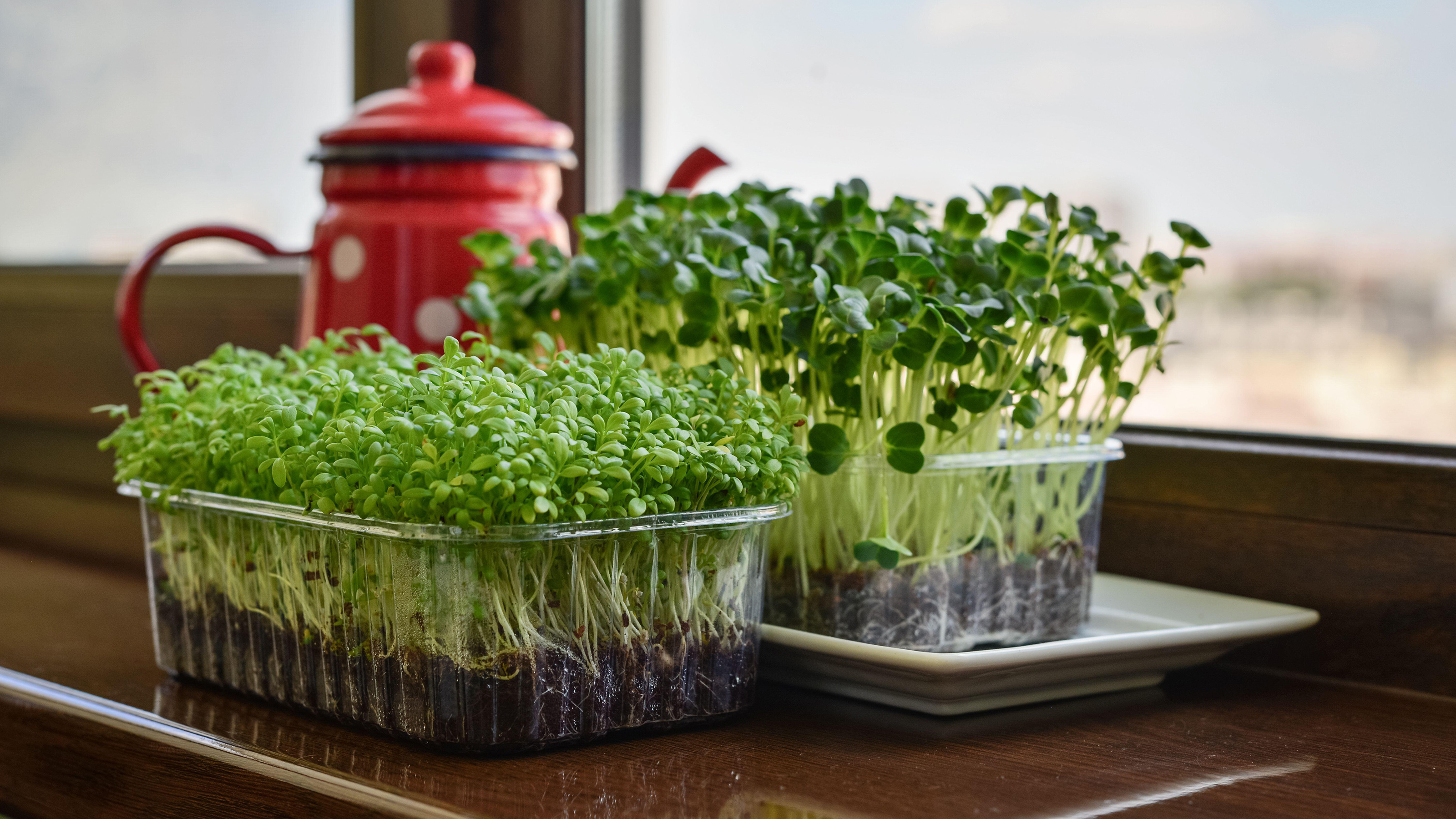
There are lots of ways to learn how to grow cress. You might have seen it sprouting in plastic punnets on windowsills, or maybe even inside egg shells or on top of cotton wool. Given how easy it is to care for it's the perfect grow-your-own project for kids and beginners, especially because results are so satisfyingly quick and easy.
Cress is familiar to us all as the microgreen leaves used in sandwich fillings and for sprinkling on salads. But cress could refer to more than just one plant – it includes nutritious veg like land cress and watercress, as well as the classic garden cress which is perhaps the most well known variety.
With cress, it’s easy to grow your own both indoors and out, whether you have just a small garden or even no outdoor space at all. Max out your kitchen garden ideas by planting cress in pots or window boxes, handy for popping into salads, soups and sauces all season. You don’t even need sun, as cress actually prefers shade - except for watercress which likes a sunnier spot. And cress is good for us too - prized as a medicinal herb in India and the Middle East, it’s a high-nutrient food rich in minerals and vitamins A, C and K, and is teeming with other antioxidants.
Simple tips for how to grow cress
Cress is super-simple and quick to grow at home as a cut-and-come-again crop, which will give you tasty leaves for months on end. And it tastes stronger and better than the store bought options.
Depending on the variety you're using, follow these handy tips for how to grow cress:
- Standard garden cress: Sprinkle the seeds onto the surface of damp peat-free multipurpose compost. Alternatively you can use moist paper or cotton balls as a base instead of compost. Press the seed lightly into your chosen surface but do not cover. Place them on a windowsill and keep their environment warm and moist until shoots reach 2in (5cm). They should be ready to harvest in just 6-8 days.
- Land cress: Sow seeds in seed trays or pots in multipurpose peat-free compost. Thin them out to 6in (15cm) apart, then pick leaves seven weeks after sowing when they reach 3-4in (7-10cm). You can also sow direct outdoors.
- Watercress: Stem cuttings are actually easier than seeds, as they root in water within days. So you could pick a pack up from the supermarket and save some stems for cultivating your own crop. Or you can sow seeds indoors in pots or trays in moist compost at 70-72°F (16-18°C). Germination takes around 7-10 days.
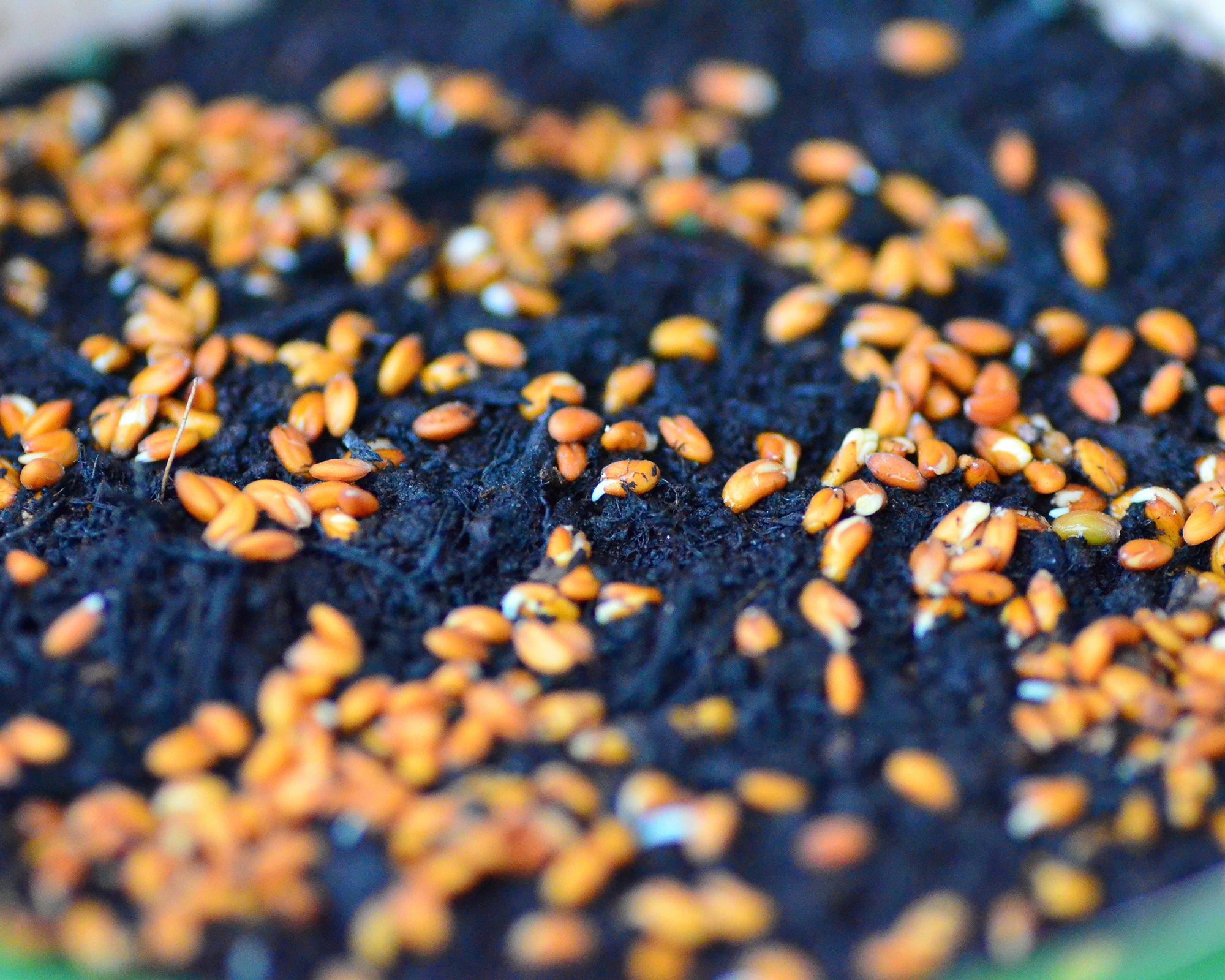
Can you grow cress outdoors?
Yes! In fact, learning how to grow cress outdoors will give you larger, sharper-tasting leaves. Cress also works very well when grown with other veg in a potager garden or raised garden beds, for intercropping with slower-growing plants, like cabbages.
Rake over your soil until it is fine crumbs. Either sprinkle seeds on the soil, a method known as broadcasting, or make drills (grooves) in the soil and sow seeds at regular intervals. If you plant cress in the ground, it’s a ‘cut-and-come-again’ crop, so you can pick the leaves up to four times altogether.
Watercress is an aquatic plant that can be grown outdoors in moist soil, or near a stream – failing that, grow it in rich soil in large pots standing in cool, clean water. You can also grow cress in a cool greenhouse for leaves over winter. Or use land cress, with its semi-evergreen foliage, as a decorative edging in the kitchen garden.
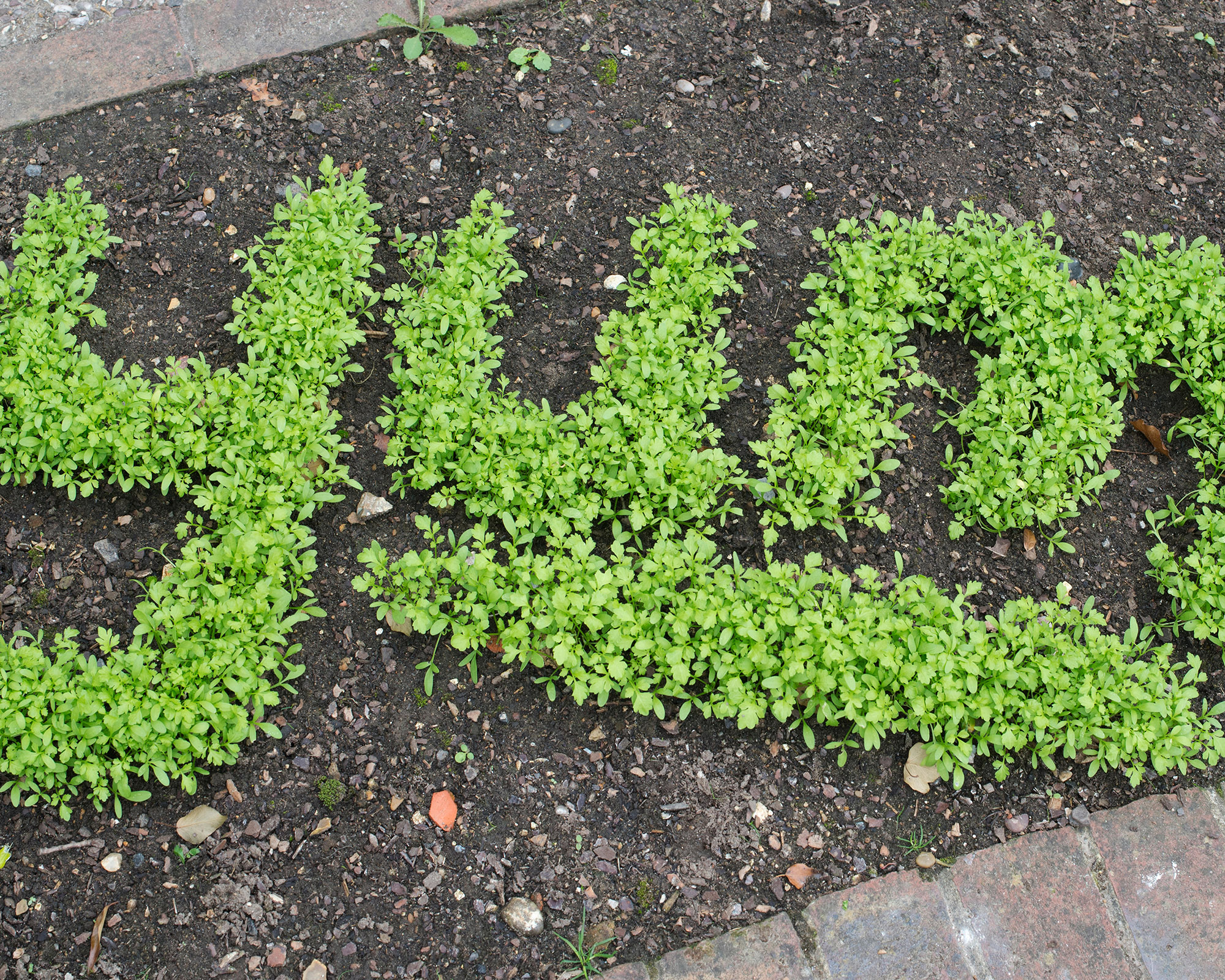
Types of cress to grow
- Garden cress (Lepidium sativum) Perhaps the most familiar of all, garden cress is a hardy annual, which you can grow as an indoor garden idea all year round on a windowsill. You can grow it outdoors too at certain times of the year. It’s the seedling leaves which are harvested and have a mildly peppery flavor. Speedy and easy to grow, it’s a perfect garden activity for kids as a grow-your-own project. Mustard (Sinapsis alba) is often grown with cress in a mustard-and-cress mixture, but is even faster! So sprinkle in the mustard seed 2-3 days after sowing the cress.
- Watercress (Rorippa nasturtium-aquaticum) Watercress has tasty, pungent leaves for using raw or cooked in soups or sauces, and it also makes an attractive garnish. A member of the nasturtium family, it’s an aquatic plant that grows naturally in freshwater streams (not suitable for ponds). They can be eaten as baby or mature leaves.
- Land cress (Barbarea verna) Also known as American cress, this tastes like watercress, but is easier to grow. Its glossy, dark green leaves persist over winter, so it looks good in the vegetable patch or a herb garden. It’s great as a garnish, and in sandwiches and salads.

When to plant cress
- If you're growing cress indoors, garden cress can be grown on a windowsill all year round so you'll never be short of tasty crops to add to sandwiches and salads.
- If you're wondering how to grow cress outdoors, plant seeds in spring or in late summer or early autumn for overwintering under cover in a greenhouse or DIY cold frame. Avoid sowing cress seeds outside in hot weather as the plants will quickly ‘bolt’ (run to seed).
- Sow land cress in spring for an early summer crop, and again in late summer for overwintering. Speed up the germination process by starting the seeds indoors, and plant them out later on.
- Root watercress stems in or sow seeds in spring/late summer. You can sow seeds direct outdoors in mid spring and again in early fall, avoiding the summer heat.
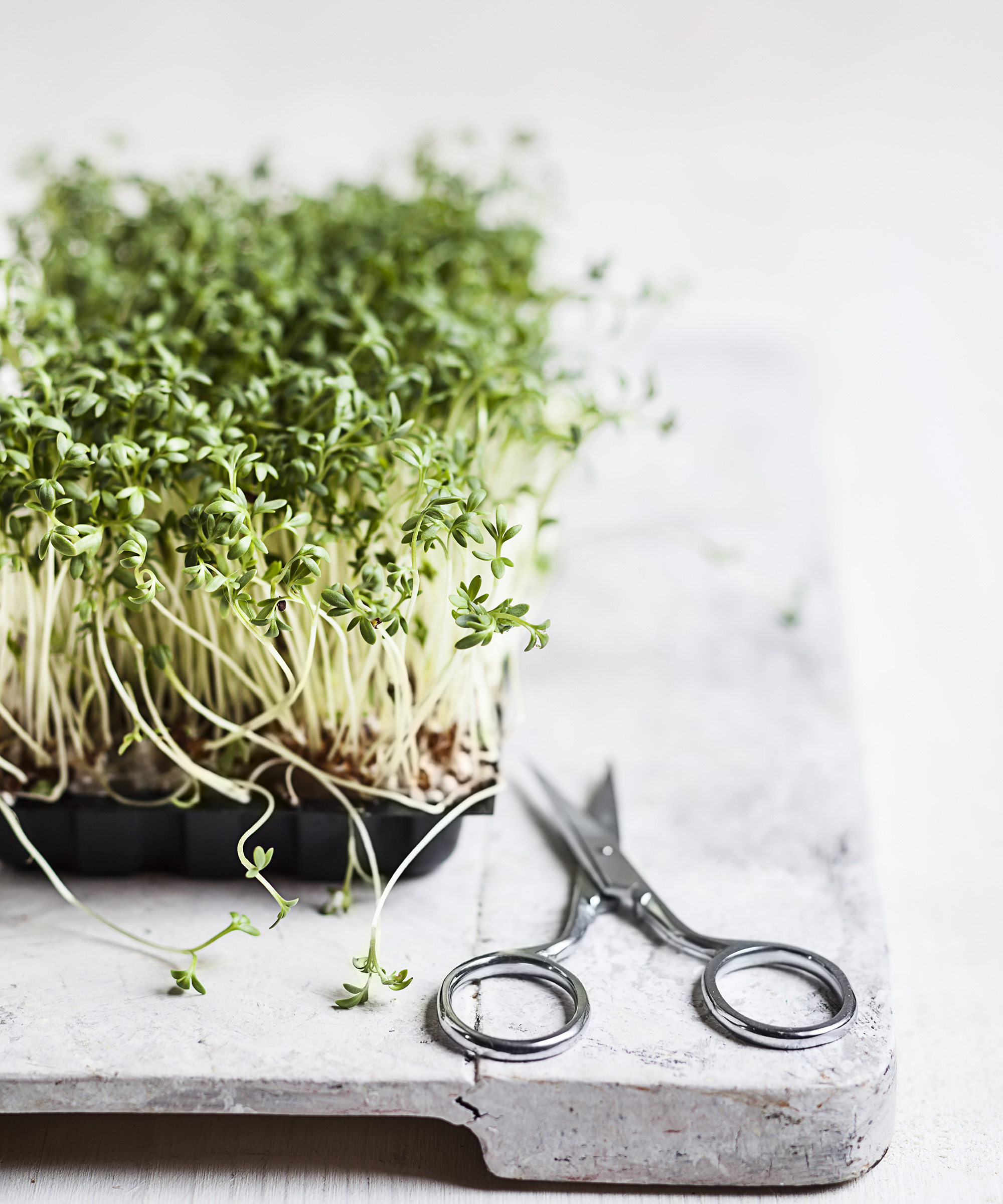
Where to plant cress
Plant cress seeds indoors on a windowsill in a pot or saucer. Or grow in trays undercover in an unheated greenhouse. Almost any container, from empty ice cream tubs to old crockery can be used to germinate cress seeds in.
For outdoor cress, plant your seeds in rich, moist soil and protect plants from wind. All types of cress grow happily in garden planters or in a small vegetable garden. They’ll enjoy light shade – they hate being blasted by full sun. The exception is watercress, which needs 4-6 hours of indirect sun.
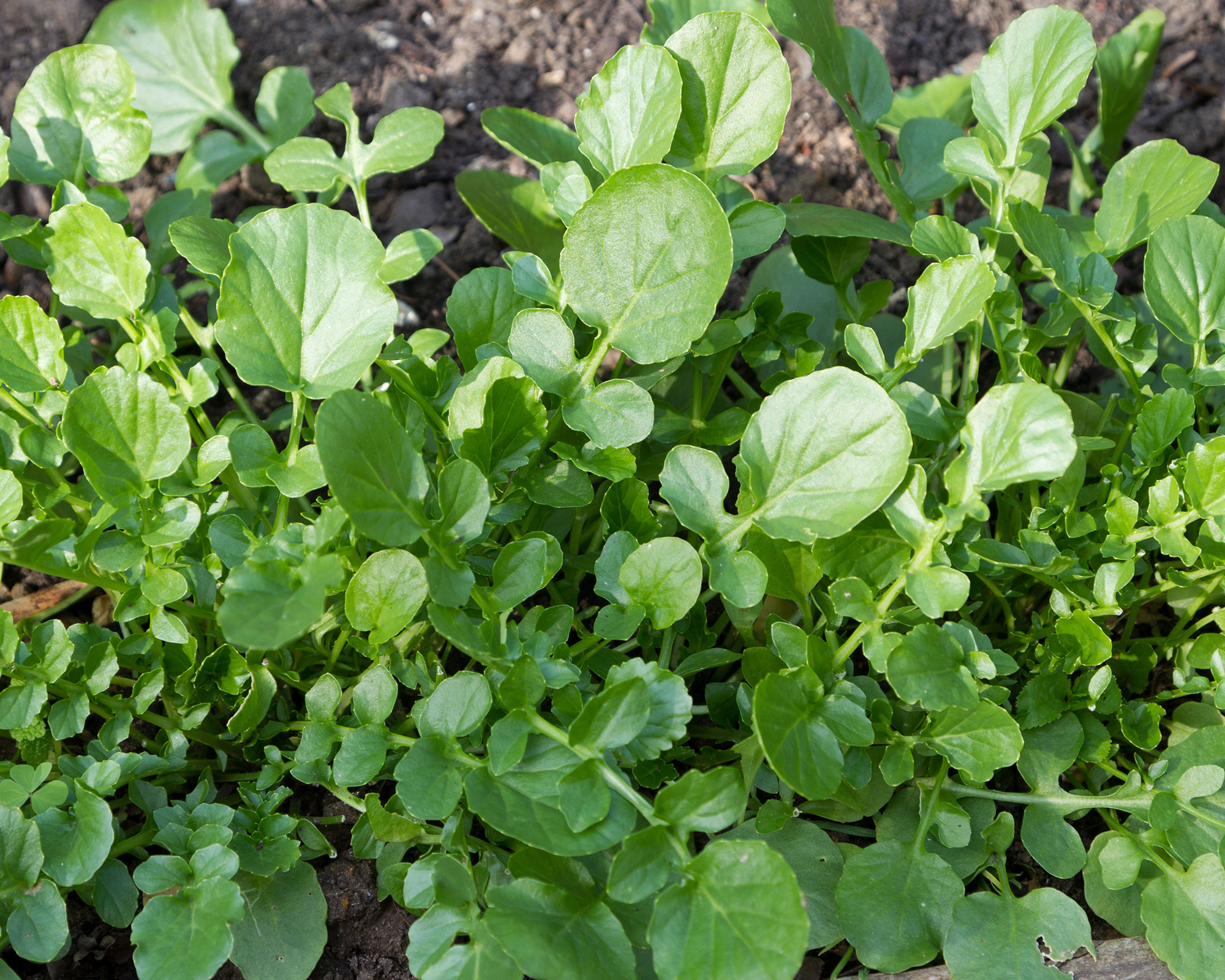
How to care for cress
To keep your plants healthy, water the seeds well, and don't be afraid to keep harvesting those yummy leaves. The more you pick, the more they’ll produce!
Watercress needs more special treatment than standard cress. Plant watercress either in very moist soil or a large plastic pot - sized about 6-8in (15-21cm) - and keep it in a tray of fresh water, which needs to be changed daily – more often in hot weather. Watercress is a perennial, but the plants deteriorate over time, so replace them regularly with stem cuttings.
Land cress will seed around in spring, so either hoe seedlings out, or transplant seedlings to where you want them.
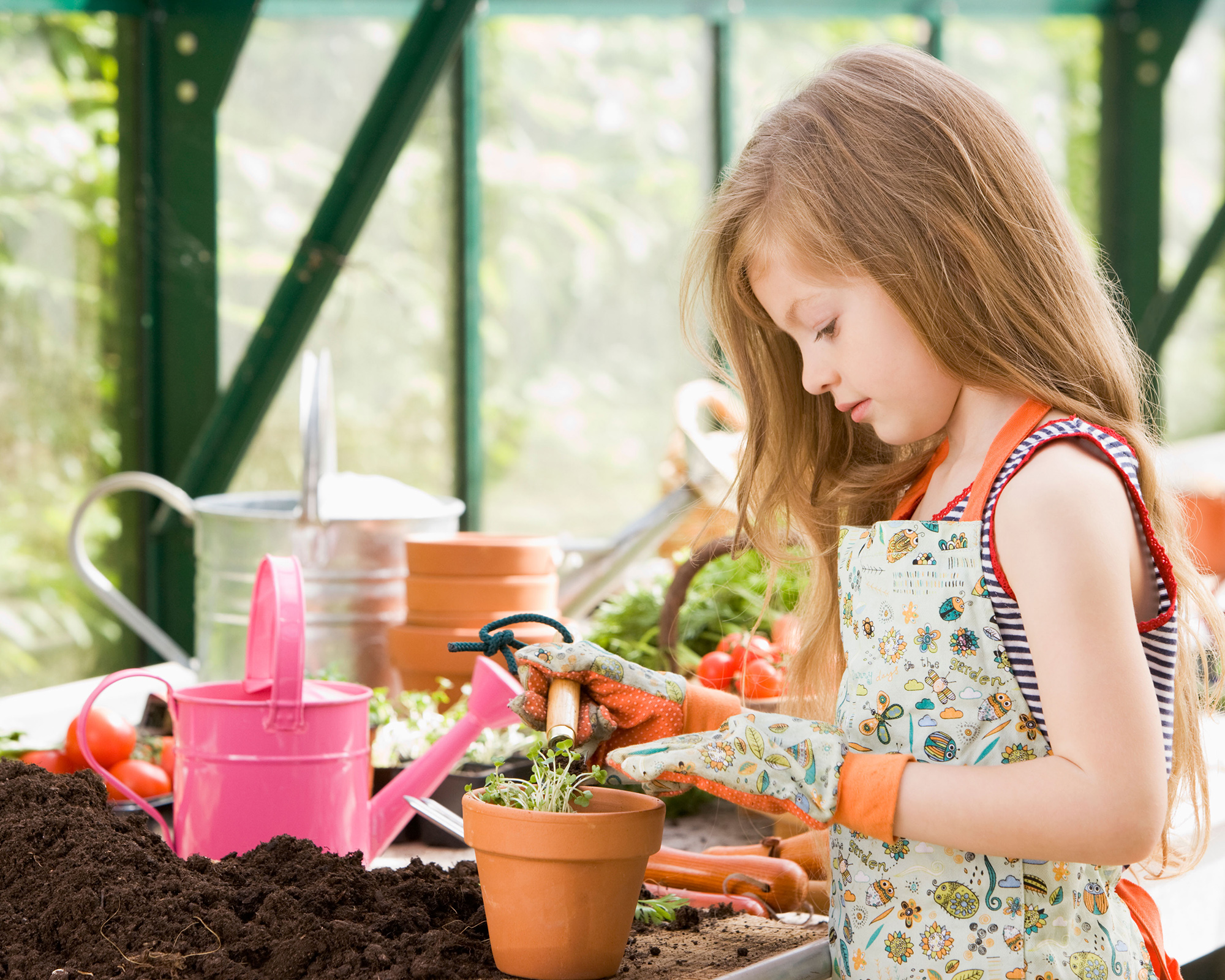
Common problems with cress
Cress is fairly free of pests and diseases. Flea beetles are the only pest you’ll need to worry about if you're growing it outdoors. They’re tiny black beetles which leap off the surface of the compost. They nibble young plants, making small holes in the leaves.
Avoid any problems by clearing up debris where the critters hide out. As a last resort, treat with a natural pyrethrum spray. But it’s better for the environment to encourage birds and frogs into your garden to eat them – or just be more chilled about a few holes here and there!
The main problem with cress is plants getting hot and dry and running to seed. So it’s important to keep watering plants well and keep them cool.
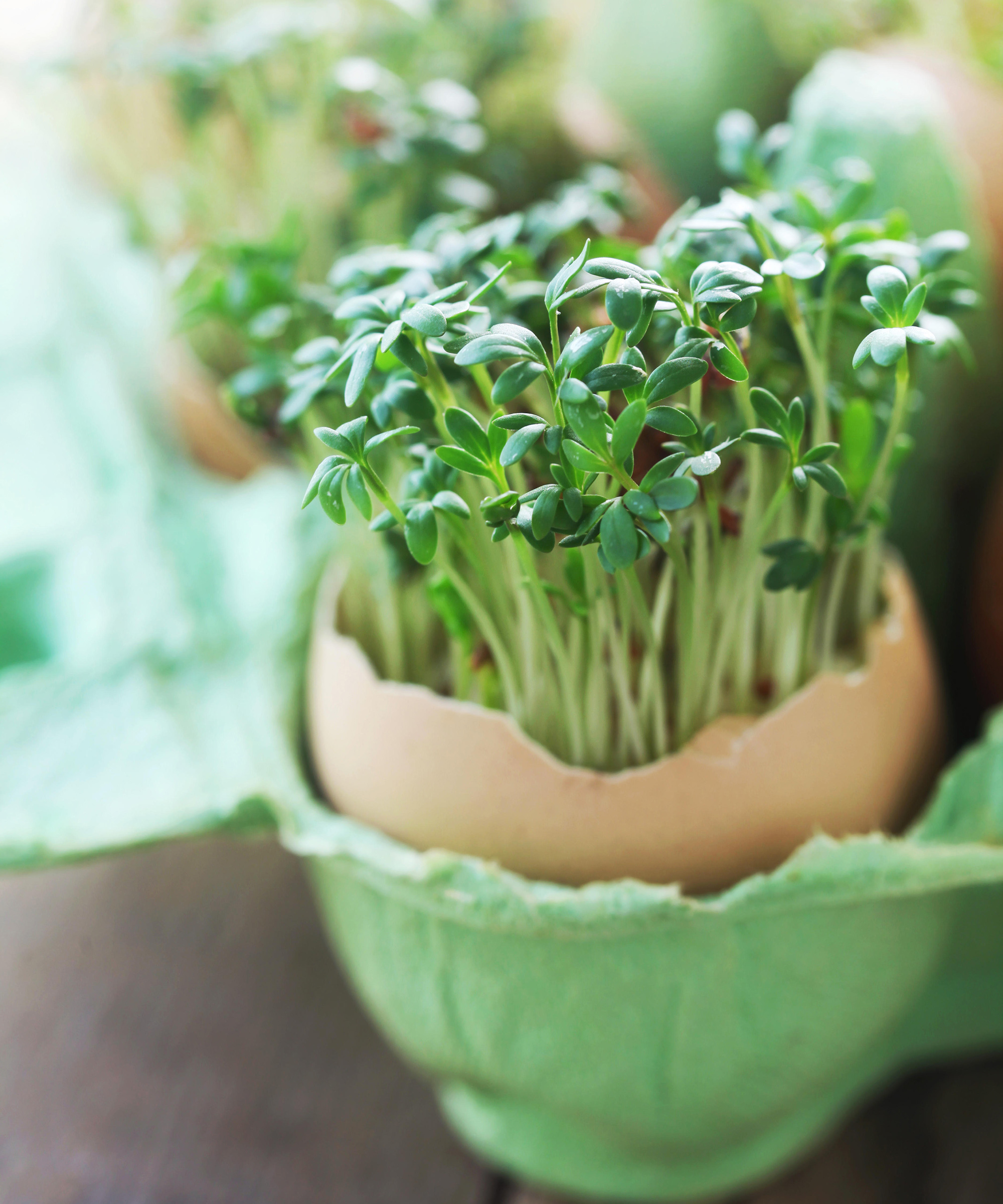
How do you grow cress on cotton wool?
To grow cress on absorbent cotton wool you'll need a small recycled pot, or plastic punnet, enough cotton balls to cover the base of your container, water and of course your cress seeds.
- Rinse the absorbent cotton balls in water and squeeze out the excess. Pack them into the base of a container.
- Sprinkle the cress seeds on top, making sure they’re sown thickly and evenly, but are not overcrowded. Press them onto the moist cotton.
- Put the pot in a sunny spot like a windowsill and wait 6-8 days for the cress to appear.
- Moisten the cotton if it starts to dry out. You can do this with a misting bottle or a very gentle sprinkling of water.
- When the cress is around 2in (5cm) high, snip off the leaves with scissors.
- This gives you one harvest. If you’re after a continuous supply, start another batch when the first shoots appear.
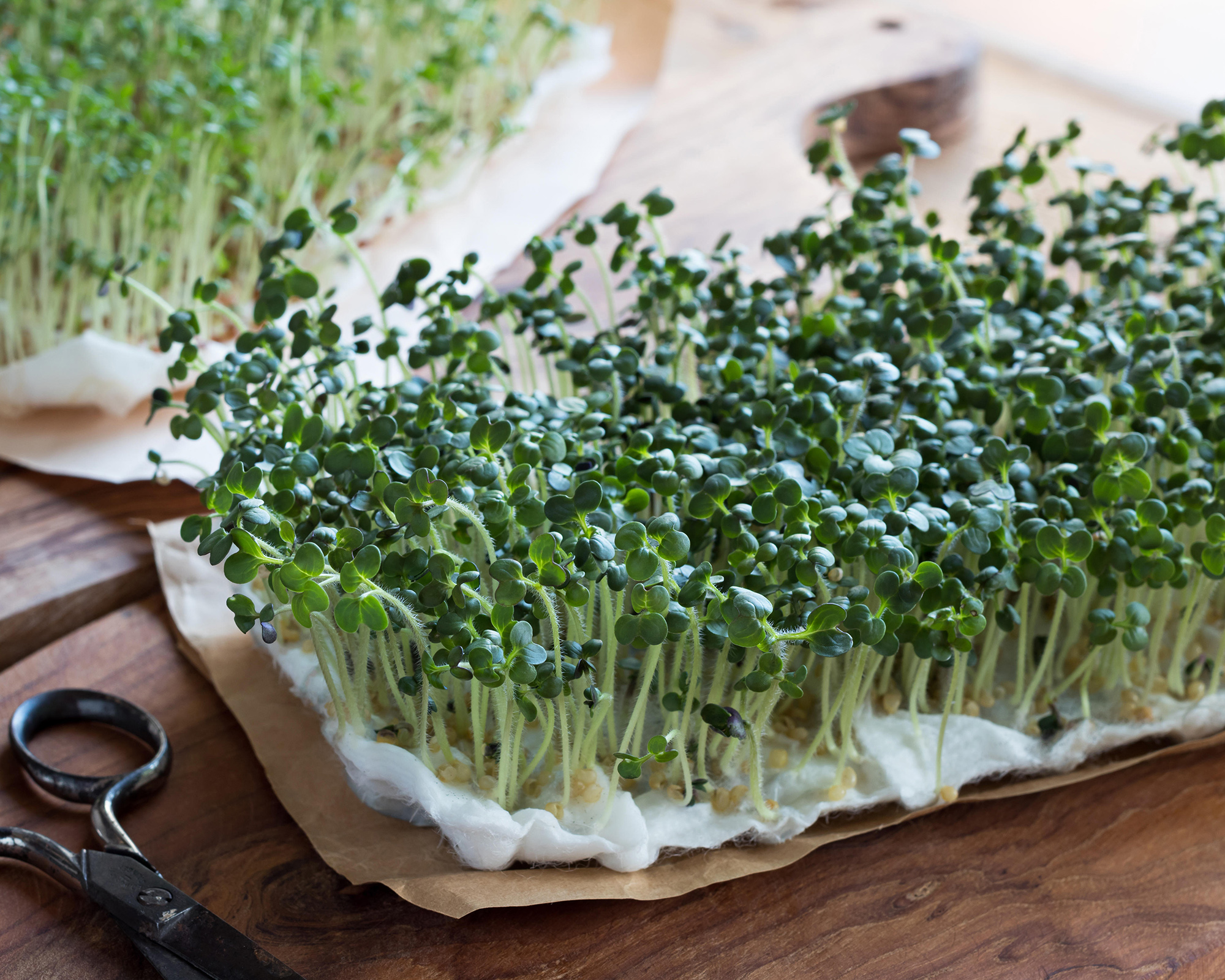
How long does it take cress to regrow?
If you grow cress indoors on cotton wool, it won’t regrow, so sow seeds every week for a continuous supply.
Cress grown outside or in seed trays will give you up to four harvests, growing back in around a week.
Land cress and watercress will grow back in around three weeks. Sow land cress every month or so for a continuous supply. It’s very hardy so you’ll be picking autumn-sown leaves until late winter, and spring-sown ones until late autumn.
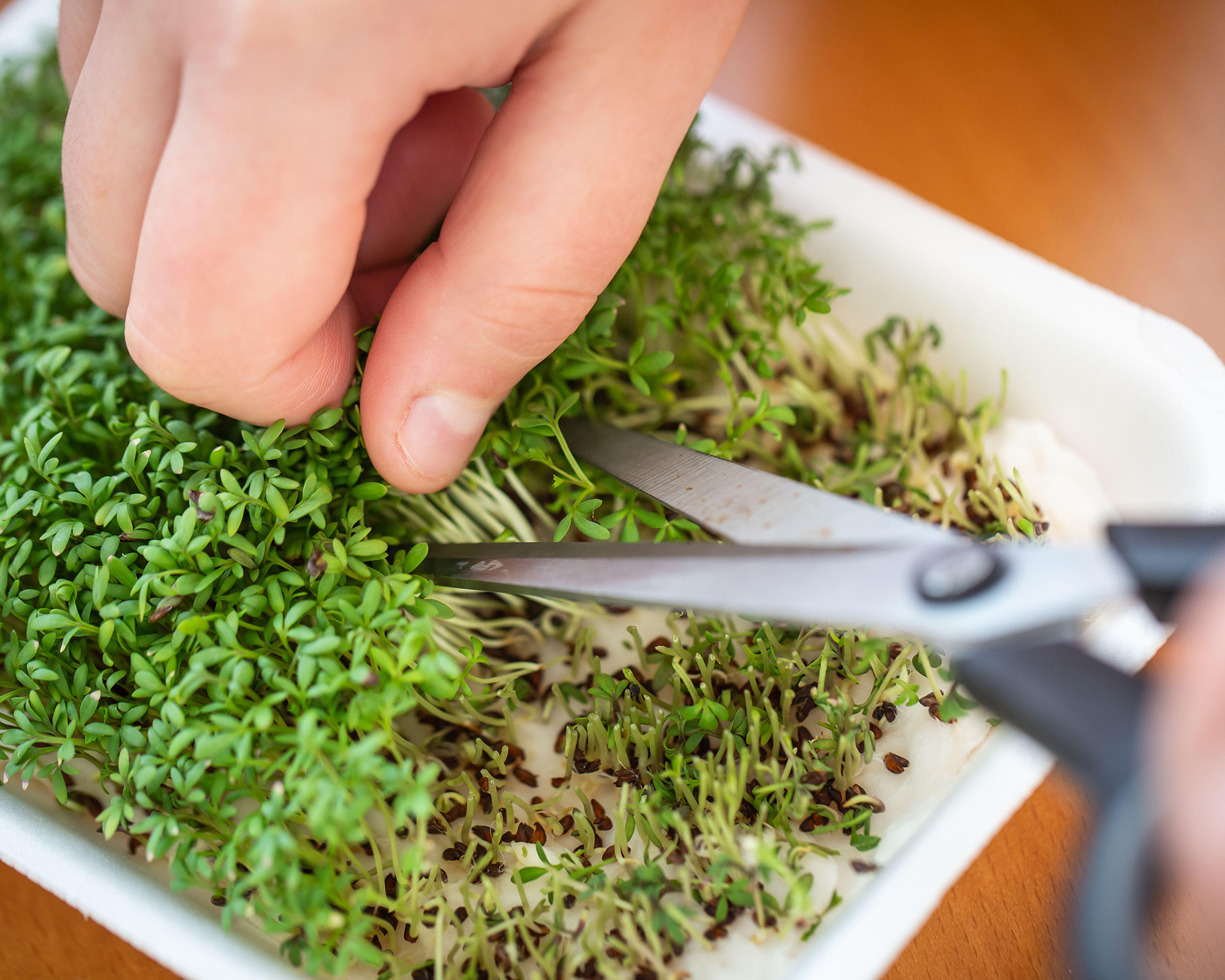
How do you harvest cress?
Snip the leaves with scissors when the shoots are 2in (5cm) high, or 4in (7cm) if you're growing land cress or watercress. Harvest leaves as you need them, as baby leaves or mature. Don’t cut more than ¼ of the plant at one time.

Geraldine is a gardener and garden writer, who has worked for over 12 years in historic public gardens and private gardens around London. She has written articles for Easy Gardens, Which? Gardening and Women’s Weekly Gardening Special magazines and for gardeningetc.com. She also edited the book ‘Britain’s Favourite Plants’ for the RHS.
